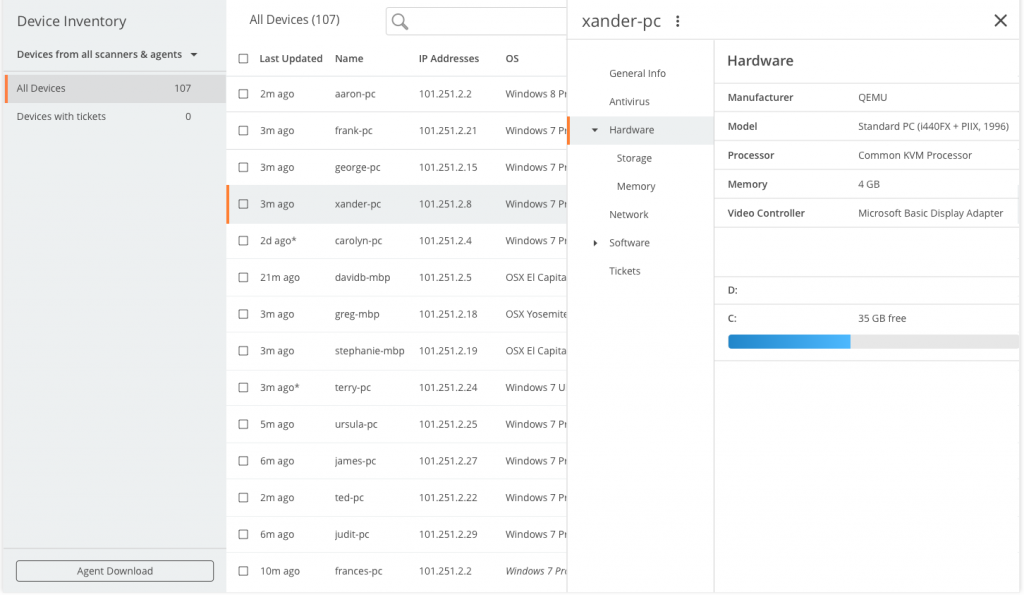
OPS IT Support Network Monitoring Solution
A good managed services program quickly addresses issues that jeopardize your company’s network infrastructure. But a great one goes the extra mile and uses a reliable network monitoring solution to proactively identify, intercept, and prevent the issues.
Network monitoring serves as our eyes-and-ears, alerting us to any issues on your network. We keep track of things like printer supplies, software installations, hard drive space – just about anything you can think of that relates to your network. The vast majority of problems that arise in a network are directly related to something changing. Our network monitoring solution will not only alert us to these changes, but will also help us troubleshoot the issue by allowing us to compare your network’s current state with what it looked like before the change. This means we can solve the problem faster! Our proactive IT pros set up network monitoring systems to alert them via email or text message whenever issues arise. This not only keeps us on top of potential problems so we can address them as quickly as possible, but it also prevents them from creating an issue.
Monitoring software is more than just keeping track of what is being installed and uninstalled on your computers. Proper network monitoring means:
- Keeping track of installations
- Noting which licenses are set to expire
- Knowing which hotfixes (patches to fix specific bugs) are installed
- Staying on top of the current state of all Windows services on each machine
- Making sure all of your computers are protected with an up to date antivirus software
OK, so now you understand how our Managed IT Services monitoring network problems will help keep your users productive, your bosses happy, and reduce your stress levels by addressing issues before they accelerate. Not to mention, the amount of valuable time you’ll save.

Protect Your Company’s Most Valuable Asset with an Inventory Management System
When you consider that your company’s computer system, and every network device connected to it, is one of its most valuable assets, you may be able to see why a network inventory management system is crucial to your financial success. Here are four ways our inventory management system will help protect your company’s largest asset – your computer network.
Information theft – A network inventory management system not only keeps track of your hardware but also your software. It also shows you who has access to that software. A regular check of your system’s inventory will let you know who has downloaded and used software they may not be authorized to use.
Equipment theft – Our network management system will automatically detect every piece of equipment and software connected to your system. And it will also let us know which items are not working properly, which items need to be replaced, and which items have mysteriously disappeared. We can eliminate workplace theft simply by running a regularly scheduled inventory check.
Licensing agreements – An inventory of your software and licensing agreements will let us know if you’ve got the necessary licensing agreements for all your software. Insufficient licensing can cost you usage fees and fines and duplicating software that you already have is an unnecessary expense.
System Upgrades – Outdated equipment and software can cost your company time, money, and resources. Downtime and slow response times are two of the biggest time killers for your business. We can set filters on our network inventory management system to alert you when it’s time to upgrade software or replace hardware with newer technology to keep your system running as smoothly and efficiently as possible. Think about it. You do a monthly inventory on the products that you sell. You count pencils, Post-Its, and copy paper at the end of every quarter. Why wouldn’t you do the same for your computer network which is one of your most valuable assets? With our network inventory management system, you’ll be able to stay on top of every network event.